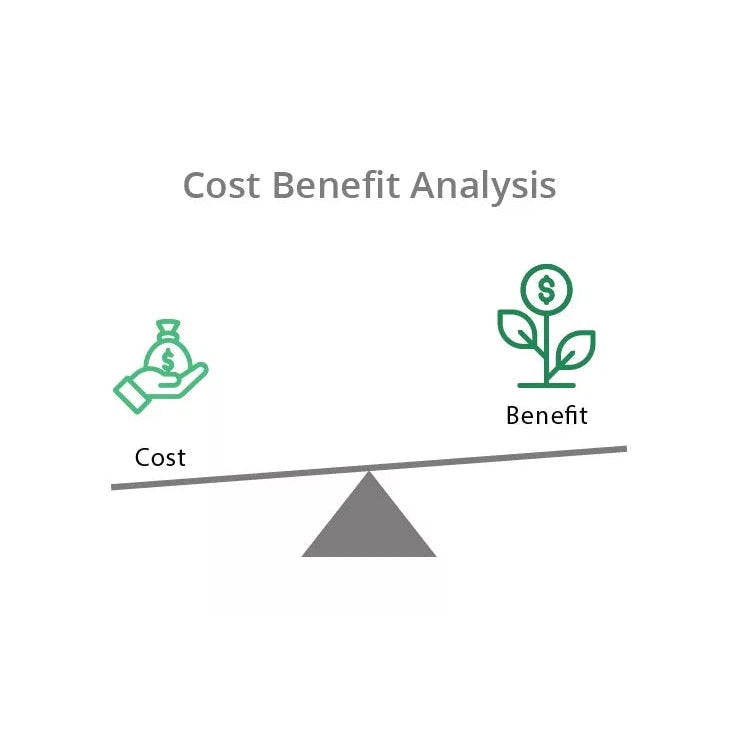SD-WAN Cost Analysis: Maximizing Efficiency and Reducing Expenses

In today's digital landscape, organizations are increasingly adopting software-defined wide area networking (SD-WAN) to meet the demands of their modern network infrastructure. SD-WAN offers enhanced flexibility, improved performance, and cost optimization compared to traditional networking approaches. However, when implementing SD-WAN, it is essential to conduct a comprehensive cost analysis to understand its financial implications. In this blog post, we will delve into the key factors involved in SD-WAN cost analysis and explore strategies to maximize efficiency while minimizing expenses.
1. Deployment Costs:
The initial investment in SD-WAN deployment typically includes hardware and software procurement, network assessment, and professional services. It is crucial to evaluate various vendors and service providers to identify the most cost-effective solution that aligns with your organization's specific requirements. Consider factors such as equipment costs, licensing fees, and implementation complexity to ensure a smooth transition.
2. Bandwidth Utilization:
SD-WAN allows for intelligent traffic routing and load balancing, which can optimize bandwidth utilization and reduce overall costs. By leveraging multiple internet connections, including MPLS, broadband, and LTE, organizations can dynamically allocate traffic based on application needs, cost considerations, and network conditions. This ensures efficient utilization of available bandwidth resources while minimizing the reliance on expensive dedicated connections.
3. Operational Efficiency:
SD-WAN simplifies network management through centralized orchestration and automation. This streamlines tasks such as configuration, monitoring, and troubleshooting, leading to reduced operational expenses. By consolidating management tools and leveraging cloud-based management platforms, organizations can achieve better visibility, control, and operational efficiency, thus driving down ongoing maintenance costs.
4. Application Performance:
One of the key benefits of SD-WAN is its ability to enhance application performance. By prioritizing critical applications and dynamically routing traffic based on real-time conditions, SD-WAN improves user experience and productivity. This optimization prevents unnecessary network congestion, reduces latency, and minimizes the need for additional bandwidth. Improved application performance ultimately translates into cost savings by ensuring efficient resource utilization.
5. Security Considerations:
While SD-WAN brings numerous advantages, it is essential to consider security requirements and associated costs. Traditional security measures, such as firewalls and intrusion prevention systems, need to be integrated into the SD-WAN architecture to safeguard network traffic. Evaluate the costs of implementing advanced security features, such as encrypted tunnels, secure web gateways, and threat intelligence services, to protect your network from evolving cyber threats.
6. Scalability and Flexibility:
Another factor to consider in SD-WAN cost analysis is the scalability and flexibility offered by the solution. As organizations grow and requirements change, SD-WAN should provide the ability to easily scale the network infrastructure without incurring significant additional costs. Consider solutions that offer flexible licensing models, allowing you to add or remove locations and adapt to evolving business needs without major financial implications.
Conclusion:
SD-WAN offers tremendous potential for organizations seeking to optimize their network infrastructure, improve performance, and reduce costs. Conducting a comprehensive cost analysis is essential to ensure a successful and cost-effective implementation. By considering factors such as deployment costs, bandwidth utilization, operational efficiency, application performance, security considerations, scalability, and flexibility, organizations can make informed decisions that align with their budgetary constraints while maximizing the benefits of SD-WAN. With careful planning and evaluation, SD-WAN can be a game-changer in achieving a cost-efficient and agile network infrastructure.







